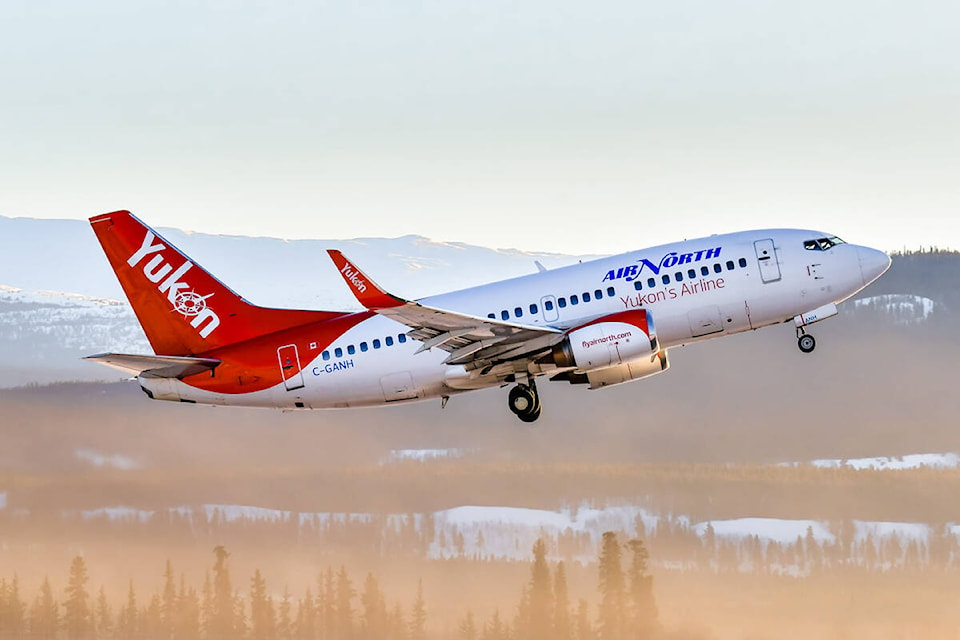The Yukon tourism industry is tracking some interesting trends coming out of the winter season.
The Tourism Industry Association (TIA) of the Yukon is framing the situation as a continuation of the recovery from the COVID-19 pandemic.
While some tourism-related numbers have rebounded to levels around the pre-COVID records, Yukon tourism operators are also encountering challenges, including rising costs, debt burdens and lagging demand from the Asia-Pacific region.
Ben Ryan sits on the executive of TIA Yukon’s board and also works for Air North.
He said one of the most notable trends is strong airport arrivals, numbers he said are higher than before the pandemic.
The Yukon government published a tourism visitation report for the fourth quarter of 2023.
During this period, there were 41,526 air arrivals to Whitehorse’s airport — 39 per cent above the five-year average, and air arrivals were up 20 per cent compared to the same period in 2022.
International border crossings were 83 per cent above the five-year average.
A significant increase over the fourth quarter of 2022 was also noted, with 17,693 crossings in 2023 compared to 13,558 in 2022.
Ryan said winter tourism to the Yukon is strong overall, with Mexico as a growing market, which wasn’t much of a factor pre-pandemic, but that has accelerated since. Partnerships with tour companies are the main drivers of this, he said.
“Some of the local businesses definitely have forged some partnerships that are delivering results. We do know Tourism Yukon has a presence and has been growing its presence in Mexico. And this is really dovetailing Destination Canada’s overall focus on the Mexico market, which has been growing,” Ryan added.
He said Mexican tourist access to Western Canada is also growing on the back of Aeromexico’s Mexico City to Vancouver route, which has been running as many as three flights a day in recent months.
However, a wrench has been thrown in the works with a new visa requirement for Mexican travellers to Canada imposed by the federal government. The recent change alters the rules for Mexican citizens seeking an electronic Travel Authorization (eTA), which is only used for air travel, or a visitor visa, which applies to all forms of travel. Only travellers who’ve had a Canadian visa within the past decade or have a valid U.S. visa will qualify for an eTA under the new rules.
The federal government estimates that 60 per cent of travellers still won’t need to apply for a visa.
Ryan said the new visa requirements caught the tourism sector nationwide off guard but the effects probably won’t be as severe as originally feared.
Strong demand for tourism from Mexico remains important because there has been less demand from Asia following the pandemic. Despite work to get that moving in the right direction, Ryan said it has been slow going.
Ryan said some of the challenges reported by many tourism operators are rising inflation and a labour shortage, especially in terms of skilled labour and technical positions, like experienced tour guides. The result is profitability challenges.
“And of course, when Tourism Yukon reports their stats, they’re able to talk about the number of visitors and the sort of revenue spend, but they’re not able to talk about the industry profitability. And so, an association like us is hearing from a lot of members where yeah, you know, the demand is high, revenues are high, but slower costs and profitability is not really rebounding,” he said.
Insurance costs, in particular, are rising amid events like the Yellowknife wildfires. Ryan said this was a huge theme that came out of a TIA Yukon survey last fall, with reports citing average insurance cost increases in the 10-20 per cent range and some operators telling TIA that their costs were up more than 50 per cent.
The Yukon tourism industry will get a chance to meet and discuss the challenges and successes of recent years at TIA’s first Yukon Tourism Industry Conference in four years, to be held on April 25 and 26.
Contact Jim Elliot at jim.elliot@yukon-news.com
Editor’s note: An earlier version of this story stated that the tourism industry conference was to be held on April 26 and 27. We regret the error.
